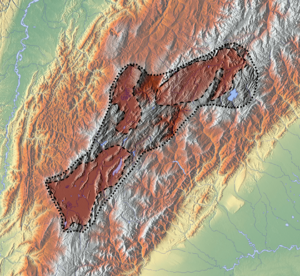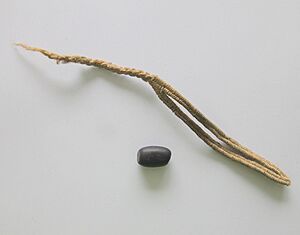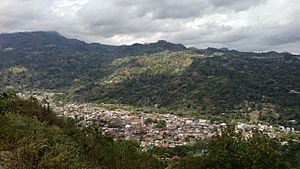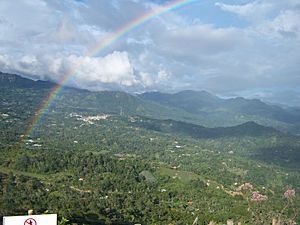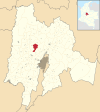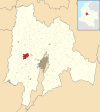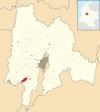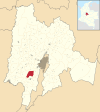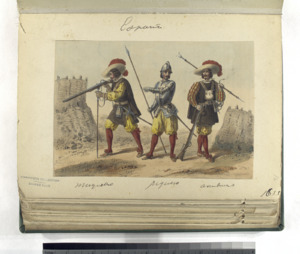Muisca warfare facts for kids
This article is about how the Muisca people fought wars. The Muisca lived in the high plains of the Colombian Andes mountains before the Spanish arrived. Their society was mostly equal, with not much difference between the leaders (called caciques) and regular people. The Muisca economy was based on farming and trading things like cotton, coca, feathers, and gold with their neighbors. They were known as "Salt People" because they got salt from special water in places like Zipaquirá. They used this salt for cooking and trading.
Even though they were mainly traders and farmers, the Muisca also had special fighters called guecha warriors. Battles often happened between the northern and southern parts of the Muisca Confederation. The zipa, who ruled the south, and the zaque, who ruled the north, fought for control of land. The main enemies of the Muisca were the Panche people, who lived to the west. The Muisca built forts with their guecha warriors along the border with the Panche.
Guecha warriors used blow guns, spears, clubs, and slings. They protected themselves with long shields and thick cotton clothes. Important battles in Muisca history include those near Chocontá (around 1490) and Pasca (around 1470). When the Spanish conquistadors arrived in 1537, the Muisca didn't resist much at first. Later, the Spanish even used Muisca warriors to help them fight the Panche in the Battle of Tocarema in 1538.
We know about Muisca warfare from the Spanish conquistadors who first met them, like Gonzalo Jiménez de Quesada. Later historians also wrote about them. Modern studies suggest the Muisca were more focused on trade and talking things out than on fighting.
Contents
Muisca People and Their Land
Before the Spanish arrived, the Muisca lived in the high central plains of the Colombian Andes mountains. They had a fairly equal society with small towns spread across the valleys. Their way of life was based on farming, trading, and getting salt, which is why they were called "The Salt People." Their land was quite isolated from the coast of Colombia. However, they traded with many nearby groups through special routes and markets. These groups included the Panche, Muzo, and Yarigui to the west, and others to the north, east, and south.
The Muisca spoke Chibcha, or Muysccubun, which means "language of the people." They traded raw goods to have everything they needed. If they had extra, they traded it for things like cotton, gold, emeralds, and feathers. The Muisca were very religious. They honored their main gods, Sué (the Sun) and Chía (the Moon). Each small town was led by a cacique. The bigger towns of Bacatá and Hunza were ruled by the zipa and zaque.
The Muisca had a special ceremony for a new zipa at Lake Guatavita. He would cover himself in gold dust and jump into the lake from a raft. This ritual led to the famous story of El Dorado, the "Man of Gold." This legend was a big reason why the Spanish conquistadors came to the Muisca lands.
How the Muisca Fought Wars
Early Spanish writings talked a lot about Muisca warfare. However, newer studies show that the Muisca were more interested in trading than in fighting. Still, everyone agrees that the Muisca had special warriors. Battles were mainly fought to protect their land from the Panche people to the west. They also fought among themselves, especially between the zipa and zaque. The Chibcha word for "war" or "enemy" was saba.
Guecha Warriors: The Muisca Fighters
The word güecha might mean "brave" or "man of the village." In Muisca society, family lines were traced through the mother. The word guecha has changed in modern Spanish to guache, which means "uncivilized."
Guecha warriors had special rights and were seen as a higher class. They were below the priests but above regular people. They were strong and brave men chosen from different villages. They trained for many years to become warriors. Unlike other men who had long hair, guecha warriors cut their hair short to be better and safer in battle.
While most people didn't wear much jewelry, guecha warriors did. They wore gold or tumbaga (a gold alloy) nose pieces, chest plates, earrings, and crowns with colorful feathers. The number of earrings showed how many enemies they had defeated. They also painted their bodies using special inks.
Weapons and Defense
For fighting and hunting, Muisca warriors used clubs, poisoned darts with blow guns, spears, and slings. They didn't make bows and arrows themselves. Instead, they took them from Panche people they had captured. To protect themselves from the Panche's poisoned arrows, guecha warriors wore many layers of thick cotton clothes. They also used long shields for protection.
Forts and Border Defenses
The Muisca leaders set up groups of guecha warriors at their borders to protect their land. While there's some doubt about a stone fort in Cajicá existing before the Spanish arrived, other forts around the Muisca Confederation have been described. These places helped guard against attacks:
| Town | Department | Neighboring Group | Altitude (meters) | Map |
|---|---|---|---|---|
| San Francisco | Cundinamarca | Panche | 1520 | |
| Anolaima | Cundinamarca | Panche | 1657 | |
| San Antonio del Tequendama |
Cundinamarca | Panche | 1540 | |
| Tena | Cundinamarca | Panche | 1384 | |
| Tibacuy | Cundinamarca | Panche, Sutagao | 1647 | |
| Silvania | Cundinamarca | Sutagao | 1470 | |
| Fosca | Cundinamarca | Guayupe | 2080 | |
| Chocontá | Cundinamarca | between zipa and zaque | 2655 | |
| Turmequé | Boyacá | between zipa and zaque | 2389 |
Famous Muisca Battles
Some historians later described the Muisca as a fighting people. But the Spanish conquistadors who first met them told a different story. Conquistadors like Juan de San Martín and Gonzalo Jiménez de Quesada said the Muisca were:
...people who want peace and not war, because although they are many, their arms are few and not offensive.
The battles that did happen were mostly against the Panche to the west. The first conquistadors described the Panche as much more aggressive, and some even said they practiced cannibalism. The word panche itself was said to mean "cruel" and "murderer."
Two main battles happened between the two parts of the Muisca Confederation (the zipa and zaque). The first was around 1470 in Pasca. During battles, Muisca warriors sometimes carried the mummies of their ancestors on their backs to scare their enemies. Battles were also planned according to the Muisca calendar, which was a mix of lunar and solar cycles.
Battles within the Muisca Confederation
Two important battles, one against a southern neighbor and one between the northern and southern Muisca, were written about by historians like Lucas Fernández de Piedrahita.
The first battle was around 1470 in Pasca. The zipa of Bacatá, Saguamanchica, led an army of about 30,000 guecha warriors. He fought against the leader of the Sutagao people. The zipa won, and the southern region became part of the Muisca Confederation.
The second battle happened about twenty years later near Chocontá, in the north of the Bogotá savanna. Here, Saguamanchica fought his stronger enemy, Michuá, the zaque, who had about 60,000 warriors. The fight lasted three hours. Both leaders died in this bloody battle.
The Spanish Conquest
When the Spanish conquistadors entered Muisca lands in March 1537, they found little resistance at first. As they moved into the Bogotá savanna, they met their first resistance in Nemocón, a place important for salt. The Spanish, who were tired from their long journey, wrote about attacks from hundreds of Muisca warriors. However, the Spanish fought them off.
Most of the time, the Muisca, who were excellent traders, tried to talk with the Spanish invaders. They wanted to stop them from using their "thunder sticks" (guns), which the Muisca had never seen and greatly feared.
Soon after the Muisca Confederation was conquered and the city of Santafé de Bogotá was founded in August 1538, the Spanish used the Muisca's old conflicts with the Panche people. The Spanish allied with the Muisca zipa, Sagipa. Together, with only 50 Spanish soldiers and 12,000 to 20,000 guecha warriors, they fought the Panche in the Battle of Tocarema on August 20, 1538.
See also
 In Spanish: Guerra muisca para niños
In Spanish: Guerra muisca para niños


